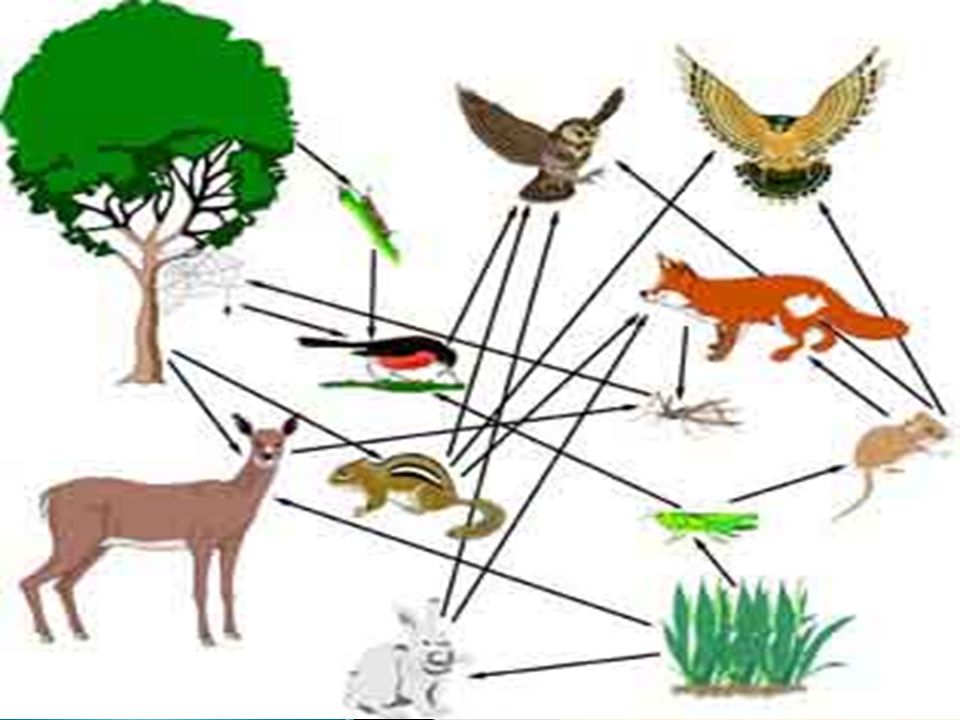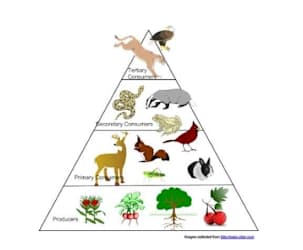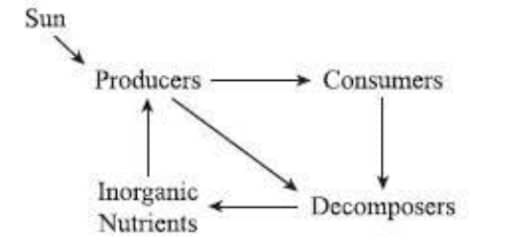The original source of almost all energy in most ecosystems.
What is sunlight?
A relationship between two in which one species, the predator, feeds on the other species, the prey.
What is predation?
 The rabbit in this food web would be considered a _____ ______.
The rabbit in this food web would be considered a _____ ______.
What is a primary consumer?
Consumer that eats plants.
What is a herbivore?
These organisms that produce their own food through the process of photosynthesis.
What are producers?
A relationship between two species in which one species benefits and the other is neither helped nor harmed.
What is commensalism?
Where an organism lives.
What is a habitat?
As you move upward, from level to level, in an energy pyramid, energy _____.
What is decreases?
The study of interactions between organisms and their environment.
What is ecology?
All connections of energy flow throughout all organisms in a habitat is represented by a _____ _____.
What is food web?
A relationship in which two species live closely together.
What is symbiosis?
In this Food Web Pyramid, the type of consumer that gets only 10% of the energy stored in plants.

What is the primary consumer?
The diagram below shows the cycling of nutrients in an ecosystem. The removal of which of the following groups would cause an immediate decrease in the amount of energy flowing through the system?

What are producers?
The nonliving aspects of an ecosystem.
What are abiotic factors?
An organism that breaks down dead organisms.
What is a decomposer?
A symbiotic relationship in which both organisms benefit.
What is mutualism?
An illustration that uses arrows to show the MANY possible directions in which matter and energy can pass through the organisms in an ecosystem.
What is a food web?
An organism that needs to eat other organisms to obtain energy.
What is a consumer?
The largest population of a species that can survive long-term based on the resources available.
What is carrying capacity?
The living portions of the ecosystem.
What are biotic factors?
The amount of energy that usually transfers from one trophic level to the next.
What is 10%?
This is a way to show how energy in a food web is allocated. Usually there is a large base and a pointed top.
What is an energy pyramid?
A carnivore that feeds on the bodies of dead organisms.
What is a scavenger?
A group of organisms that share distinct characteristics and that are capable of reproducing.
What is a species?